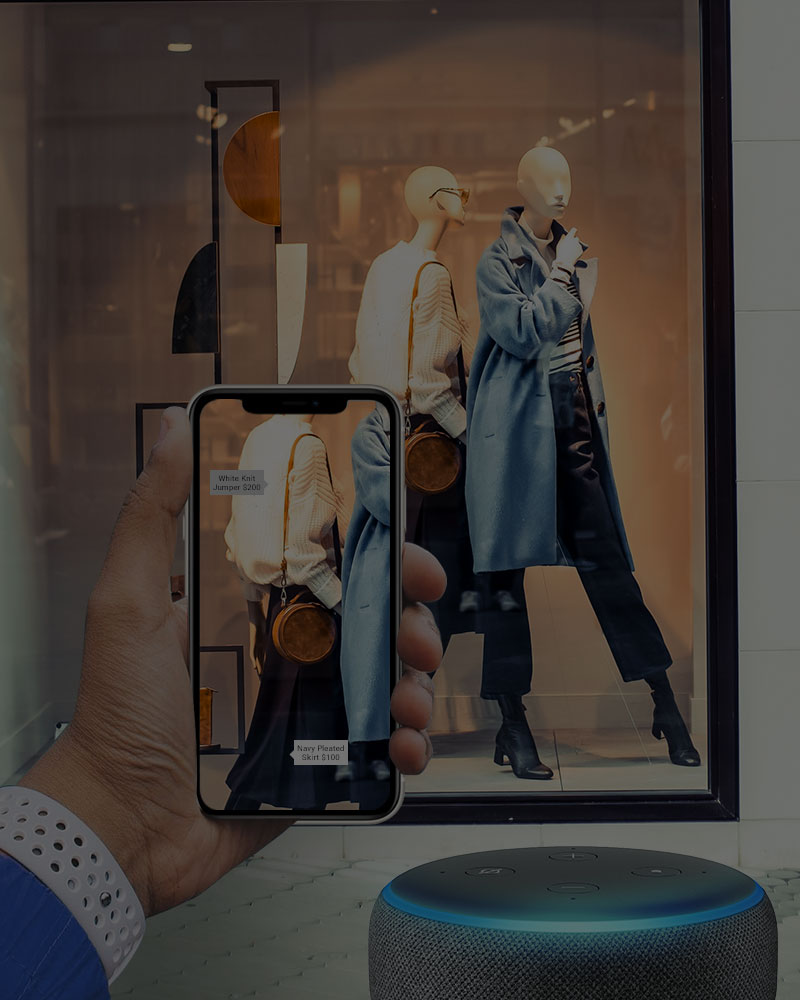The modern marketplace is transforming rapidly, that much is clear. But what exactly is driving these most recent changes, and how can businesses ensure they’re not left behind in the digital revolution?
Contextual commerce, simply put, is the practice of seamlessly implementing purchase opportunities into the organic environments and everyday activities of customers. At its most effective, the idea is to capture a sale or customer in the moment of discovery of a brand’s product or service, on any platform.
Presenting a simple method to purchase at this point of high intent, can be a sure way to increase sales. Makes sense, right?
The Connected World
The array of available devices on the market has revolutionised the future of retail. To begin with, all we needed was a smartphone to be able to browse and purchase anywhere, anytime. Now, with the explosion of smart speakers that are set to outnumber tablets by 2021 and the Internet of Things in general, there will be an almost constant opportunity to buy a product in context, conveniently.
These devices are installed throughout our homes and workplaces, even attached to our wrists all day long. The data they collect on users’ behaviours throughout their day, can then be fed back to them by retailers in the form of a personalised customer journey.
Contextual commerce, therefore, uses artificial intelligence and data analytics to drive personalisation and customer experience. Combined with advancements in speech recognition, which will further shorten the cycle between engagement and purchase, we can expect to see significant success when applied correctly.
Social media applications are evidently one of the major platforms to capitalise on direct product purchase. With over 130 million consumers searching for Instagram product tags each month, this is a key part of contextual commerce. By providing the ability to purchase searched products directly in the app, rather than having to leave Instagram to finish the transaction on a retailer’s website, they have greatly increased the likelihood of consumers completing the process.
If the direct access into our social networks and data isn’t enough to shift product, then surely the future of virtual reality and augmented reality will create some engaging and contextual purchase opportunities. There is still some work to be done by the big tech players involved, however overlaying graphics and data in front of consumers in a helpful way, with the opportunity to purchase easily, will undoubtedly create an immersive experience that leads to increased sales.
Authenticity, Purpose and Values
All of this said, there are still other factors to consider, besides a relentless technological advance towards data capture and selling goods. Today’s online consumer profile is significantly composed of Millenials, demanding purposeful and ethical brands with which they share the same values.
Modern consumers are conscious of supporting businesses that create positive change, and have environmental and welfare considerations close to heart, rather than simply revenue and shareholders’ interests. An alignment between easy eCommerce solutions and ethical goods or practices will be crucial for success in the coming decade.
It’s no wonder contextual commerce is forecasted to be the future of retail, as it drives new opportunities to capture new audiences and incremental transactions. Early adopters that are willing to transform early, will benefit from higher conversion rates and increased sales.
If you’d like to read on, see our article ‘The New Architecture Approach Truly Innovating Experience-Driven Commerce’. Alternatively, for more information on contextual commerce and how merchants can find success in the future of retail, get in touch with our industry experts at eWave.

